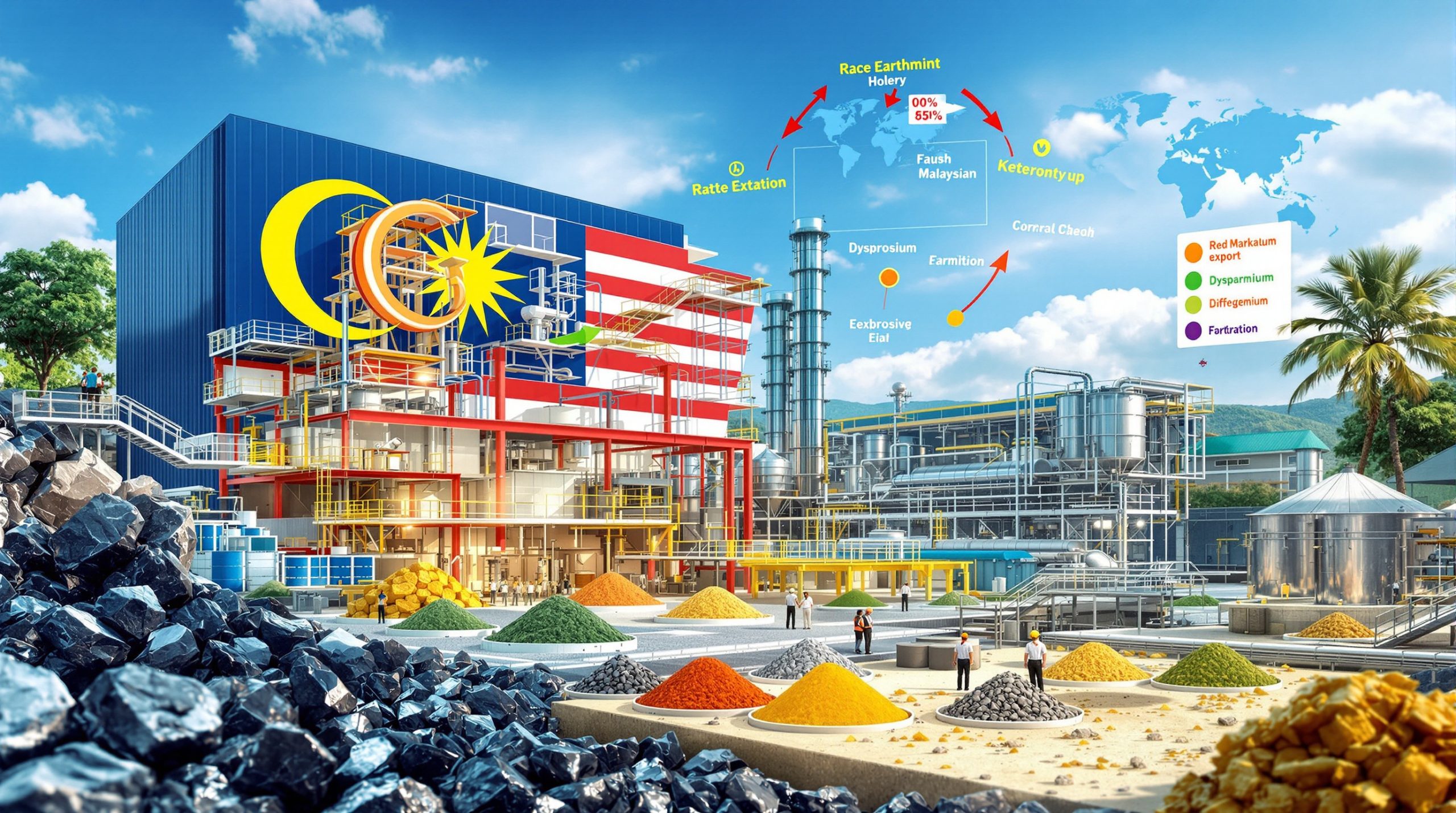How EU Sanctions Impact Russian Oil Trade and Global Prices
The global oil market has experienced notable price movements in response to the European Union's latest round of sanctions against Russia. With WTI crude climbing 1.44% to $68.51 per barrel and Brent crude rising 1.29% to $70.42, market participants are closely watching how these regulatory measures reshape energy trade flows. The coordinated price increases across multiple benchmarks signal broader market factors beyond simple supply-demand dynamics.
Oil prices climb as EU sanctions target Russian trade, creating ripple effects throughout global energy markets. These sanctions represent the EU's 18th package of measures designed to limit Russia's ability to monetize its energy resources, with significant implications for refiners, traders, and consumers worldwide.
Price Movements Reflect Geopolitical Tensions
The recent price rally marks a meaningful shift after weeks of downward pressure. Beyond the benchmark crudes, other key indicators show similar strength:
- Murban crude: Up 1.51% to $71.78
- Natural gas: Up 1.33% to $3.589
- Gasoline futures: Up 0.26% to $2.176
These synchronized movements demonstrate how deeply interconnected global energy markets have become, with regulatory changes in one region rapidly affecting prices worldwide. The market's sensitivity to sanctions news highlights the critical role geopolitics plays in energy price formation.
"The coordinated rise across crude benchmarks, natural gas, and refined products indicates a broad market reaction to geopolitical developments rather than isolated supply-demand factors," notes Oilprice.com in its July 18, 2025 analysis.
What's Driving the Recent Oil Price Increases?
The upward momentum in oil prices comes amid significant developments in the European regulatory landscape. The EU's implementation of its 18th sanctions package has triggered renewed market optimism despite ongoing economic uncertainties.
Sanctions as Price Catalysts
The EU's latest sanctions specifically target Russian energy trade channels, creating market uncertainty about future supply flows. This uncertainty has prompted traders to build risk premiums into current prices, contributing to the observed increases across all major benchmarks.
Traders are particularly focused on how these sanctions might disrupt established trade routes and potentially create temporary supply bottlenecks in certain regions. The price action suggests markets are pricing in some degree of trade disruption, even as Russian oil continues finding alternative buyers.
Market Fundamentals Supporting Higher Prices
Beyond sanctions, several underlying market fundamentals are supporting higher prices:
- Seasonal demand increases during summer driving season
- Declining U.S. crude and gasoline inventories
- OPEC+ maintaining production discipline
- Concerns about Middle East supply disruptions
These factors, combined with the sanctions news, have created a bullish sentiment that's lifting prices across the energy complex. The market's reaction demonstrates how regulatory measures can amplify existing price trends rather than create them in isolation.
How Are the New EU Sanctions Structured?
The European Union has implemented its 18th package of sanctions against Russia, with significant provisions specifically targeting energy trade channels. These measures represent a strategic evolution in the EU's approach to limiting Russian revenue streams while balancing European energy security needs.
Key Components of the New Sanctions Package
The latest sanctions include several mechanisms designed to restrict Russia's ability to monetize its energy resources:
- Enhanced monitoring of Russian crude shipments to third countries
- Stricter enforcement of the existing price cap mechanism (lowered to $47.60 per barrel)
- New restrictions on specific Russian energy companies and their subsidiaries
- Measures targeting financial institutions facilitating Russian energy transactions
- Expanded restrictions on technology transfers related to energy infrastructure
These measures aim to increase the cost and complexity of Russian oil exports without completely blocking them from global markets—a balanced approach that reflects Europe's ongoing need for energy security.
Slovakia's Diplomatic Maneuvering
A notable development in the sanctions implementation was Slovakia's initial resistance followed by eventual cooperation. After initially holding up the process by seeking exemptions for Russian gas imports, Slovakia has now lifted its veto, allowing the sanctions package to move forward.
This diplomatic episode highlights the complex balancing act facing EU member states:
"Slovakia lifted its veto on the new EU energy sanctions on Russia after initially holding up the process by seeking exemptions for Russian gas imports," reported Oilprice.com (July 18, 2025).
The compromise reached illustrates how the EU must navigate diverse national energy security concerns while maintaining a unified policy stance. Slovakia's eventual support enabled the sanctions to proceed, triggering the observed market reaction.
What Impact Are These Sanctions Having on Global Supply Chains?
The new sanctions are already creating ripple effects throughout global energy supply chains, with particular impact on trade flows between Russia and key Asian markets. These disruptions are forcing refiners to adapt their sourcing strategies and reconfigure their operations.
Disruption to Established Refinery Operations
One significant consequence has been the disruption of established refinery operations, particularly those with Russian ownership or investment:
- India's Nayara refinery, majority-owned by Russia's Rosneft, faces new restrictions on exporting refined products to Europe
- The sanctions have complicated Rosneft's ongoing attempts to sell its stake in Nayara, potentially derailing negotiations with regional majors including India's Reliance and Saudi Arabia's Aramco
- Nayara currently accounts for approximately 16% of India's Russian crude imports (about 285,000 barrels per day)
These restrictions are reshaping competitive dynamics among Asian refiners, with Reliance emerging as the only Indian refinery still able to export refined products to Europe—a significant competitive advantage.
Redirection of Energy Flows
The sanctions are accelerating the redirection of energy flows away from European markets:
- Russian exports are increasingly shifting toward Asian buyers
- European refiners are sourcing more crude from alternative suppliers in the Middle East, West Africa, and the United States
- U.S. Gulf Coast refiners may benefit from reduced competition in European diesel markets
This redirection creates both challenges and opportunities across the refining sector. While some refiners face higher costs and logistical hurdles, others are capitalizing on newly created arbitrage opportunities.
Middle East Production Disruptions Compound Effects
Coinciding with these sanctions, security incidents have impacted production in Iraqi Kurdistan:
- Drone strikes on several oilfields including Tawke, Peshkabir, Khurmala, and Sarsang have significantly reduced regional output
- Production has dropped from approximately 280,000 barrels per day to just 70-80,000 barrels per day
- These disruptions coincide with announcements about resuming exports through the Kirkuk-Ceyhan pipeline, which had been halted since February 2023
These geopolitical developments in the Middle East compound the effects of sanctions, creating additional supply uncertainties that contribute to market volatility.
How Are Asian Nations Responding to Changing Global Dynamics?
East Asian nations are strategically adjusting their energy sourcing strategies, partly in response to broader geopolitical considerations including potential oil price movements & trade war. These adjustments reflect both economic calculations and political hedging.
Increased U.S. Crude Purchases
Several Asian nations have proactively increased their imports of U.S. crude oil:
- Indonesia's state energy company Pertamina signed a memorandum of understanding with the U.S. on crude oil supply
- Thailand has increased its WTI imports to approximately 150,000 barrels per day, representing a 15% increase from previous year
- South Korea has been working through state-owned entities to increase U.S. crude flows, including purchases for strategic storage
These shifts demonstrate how oil prices climb as EU sanctions target Russian trade, creating new trade patterns and partnerships that may persist even if sanctions are eventually lifted.
Economic Considerations vs. Political Positioning
While some of these purchasing decisions appear politically motivated, economic factors remain important:
- Private refiners in South Korea, including SK and Hanwha TotalEnergies, have indicated they will only purchase U.S. crude if it offers competitive economics
- The premium for WTI compared to regional competitors like Murban has recently narrowed to approximately $1 per barrel, improving the economic case for U.S. imports
This balancing of economic and political considerations highlights the complex calculations refiners must make in the current environment. As one industry observer noted: "Asian refiners are hedging their geopolitical bets while remaining vigilant about their bottom lines."
China's Unique Position
China remains a crucial market for Russian energy exports, with significant purchasing power and political willingness to maintain trade relationships despite Western pressure:
- Chinese refiners have increased Russian crude imports substantially since 2022
- This continued willingness to purchase Russian energy significantly impacts the effectiveness of Western sanctions
- China's buying patterns have become a key indicator for measuring sanctions impact
The China factor demonstrates the limits of sanctions in a multipolar world where not all major economies align with Western policy objectives.
What's Happening in Other Energy Production Regions?
While Russian sanctions dominate headlines, significant developments in other production regions are also influencing global energy markets. These developments provide important context for understanding broader supply trends.
Canadian Production Resilience
Canada's oil sands producers have achieved remarkable cost efficiencies:
- Major producers like Suncor and Imperial Oil have become North America's lowest-cost producers
- Current breakeven prices for oil sands operations have dropped to approximately $41-43 per barrel, down from $50-52 before recent global disruptions
- Operational improvements including autonomous mining vehicles, improved water management, and AI integration have substantially reduced costs
- The long-life nature of oil sands assets provides stability, with companies like Canadian Natural Resources reporting 43 years of production potential from current reserves (20 billion BOE)
These efficiency gains have transformed Canadian producers from high-cost operators to resilient market participants who can remain profitable even during price downturns—a significant change from their historical position.
Technology-Driven Cost Reductions
The application of advanced technologies has been crucial to cost reduction efforts:
- Autonomous haul trucks reduce labor costs while improving operational efficiency
- Advanced water recycling systems minimize environmental impacts while reducing expenses
- Artificial intelligence optimizes production parameters in real-time
- Remote monitoring capabilities reduce personnel requirements
These technological improvements demonstrate how traditional energy producers are adapting to compete in a changing market landscape, even as the world transitions toward cleaner energy sources.
What Are the Long-Term Supply Implications for Global Markets?
Recent data suggests potential constraints on future supply growth, particularly in the United States, which has been a key driver of non-OPEC production increases. These constraints could impact long-term market balances and price trajectories.
U.S. Reserves Showing Signs of Plateau
According to the U.S. Energy Information Administration:
- U.S. proven reserves of crude oil and condensate declined 4% to 46 billion barrels as of end-2023
- The Bakken play in North Dakota showed the largest year-over-year decrease, shedding more than 600 million barrels
- New Mexico saw the largest increase with a net addition of 380 million barrels
- Texas continues to dominate U.S. reserves with 43% of the total (20.1 billion barrels)
This reserve pattern suggests US production decline may be approaching structural limits. As the Oilprice.com analysis notes: "Reserve additions have been continuous over the past decade, except for the 2015 price collapse and the 2020 pandemic impact, indicating that US oil growth is structurally set to plateau."
Natural Gas Reserves Declining More Rapidly
The decline in U.S. natural gas reserves has been even more pronounced:
- Total reserves fell 12.6% (87 trillion cubic feet) to 603.6 trillion cubic feet
- Every major producing basin experienced year-over-year declines
- This trend could have implications for global LNG markets as U.S. export capacity continues to expand
The simultaneous decline in both oil and gas reserves points to broader challenges in maintaining U.S. production growth, which has been a key counterbalance to OPEC production impact in recent years.
Implications for Market Balance
These reserve trends could have significant implications for future market balances:
- Reduced U.S. production growth may strengthen OPEC+'s market position
- Higher marginal production costs could establish a higher floor price for oil
- Investment patterns may shift toward areas with remaining growth potential
- Supply constraints could exacerbate price volatility during demand surges
Market participants should monitor these trends closely, as they may signal a structural shift in global supply dynamics that could influence prices for years to come.
How Are Commodities Beyond Oil Being Affected?
The energy transition and technological changes are creating interesting dynamics in commodity markets beyond traditional hydrocarbons. These interconnected markets provide important signals about broader economic and technological trends.
Critical Minerals Gaining Prominence
Ruthenium, an ultra-rare platinum group metal, has emerged as a standout performer:
- Prices have doubled over the past year to approximately $800 per ounce
- The metal is critical for chip production, hard disk drives, and as a catalyst in chemical manufacturing
- Supply is extremely concentrated, with 80% coming from South Africa and Russia as the second-largest producer
- Annual production is only about 30 tonnes, creating significant supply vulnerability for this increasingly important material
The ruthenium price surge highlights how sanctions against Russia can impact critical material supply chains well beyond traditional energy markets. As technology adoption accelerates, these lesser-known commodities could become increasingly important price signals.
The Connection to Energy Transition
Many critical minerals are essential for energy transition technologies:
- Battery metals (lithium, cobalt, nickel) for energy storage
- Rare earth elements for electric motors and generators
- Copper for electrical infrastructure and renewable energy
- Platinum group metals for hydrogen technologies
The performance of these commodities provides important context for understanding the broader energy transition landscape. Supply constraints in critical minerals could potentially slow deployment of certain clean energy technologies, highlighting the interconnected nature of traditional and emerging energy systems.
What Should Investors Watch for in Coming Months?
Several key indicators will be important to monitor as markets continue to digest these developments. These factors will shape market direction and volatility in the coming quarters.
Implementation Effectiveness of Sanctions
The practical impact of sanctions will depend on:
- Enforcement mechanisms and compliance monitoring
- The ability of market participants to develop workarounds
- Diplomatic responses from affected countries
- Potential for further escalation or modification of measures
Investors should track trade flow data, price differentials between Russian and non-Russian crude grades, and official statements from key players to gauge how effectively sanctions are being implemented.
Supply Response from Alternative Producers
Market balance will be influenced by how quickly other producers can respond:
- OPEC+ production policy adjustments
- U.S. shale activity levels in response to current price environment
- Canadian export capacity constraints
- Potential for new investment decisions in major producing regions
These supply responses will determine whether sanctioned Russian volumes can be adequately replaced or if supply gaps will emerge, potentially driving prices higher.
Demand Factors Remain Crucial
The demand side of the equation remains equally important:
- Global economic growth trajectories
- Transportation fuel consumption patterns
- Industrial activity levels in major economies
- Seasonal factors affecting energy use
Any significant deviation from expected demand patterns could amplify or counteract the supply-side effects of sanctions, creating trading opportunities or risks depending on positioning.
Frequently Asked Questions About Oil Market Sanctions
How do price caps on Russian oil actually work?
The price cap mechanism limits the price at which Russian oil can be sold internationally while still accessing Western shipping and insurance services. The system requires attestation from buyers that purchases comply with the cap. The latest EU sanctions have reportedly lowered the cap on Russian oil to $47.60 per barrel, increasing pressure on Russian export revenues.
This mechanism works through the West's dominance in shipping services:
- Approximately 90% of global shipping insurance is provided by Western firms
- Major shipping and logistics companies are primarily based in EU, UK, or U.S.
- Financial settlement systems are largely controlled by Western institutions
By restricting access to these services for transactions above the cap price, the sanctions aim to force price discounts on Russian exports without completely blocking them from reaching market.
Can sanctions effectively limit Russian oil exports?
While sanctions have redirected Russian export flows away from traditional European markets, they have been less effective at reducing overall export volumes. Russia has developed alternative logistics networks, including "shadow fleet" tankers operating outside Western insurance markets. However, sanctions do increase transaction costs and reduce the price Russia can command for its exports.
Effectiveness varies across different market segments:
- Crude oil: Relatively easy to redirect to alternative buyers
- Refined products: More challenging due to specific quality requirements
- Natural gas: Most difficult due to fixed pipeline infrastructure
This varying effectiveness explains why sanctions have focused particularly on crude oil and refined products, where market flexibility allows for meaningful impact.
How are refiners adapting to changing trade flows?
Refiners globally are adjusting procurement strategies, processing configurations, and product distribution channels. European refiners have increased imports from the Middle East, West Africa, and the United States to replace Russian barrels. Meanwhile, refiners in countries like India have increased Russian crude processing, taking advantage of discounted prices while navigating complex compliance requirements.
These adaptations include:
- Reconfiguring refinery units to process different crude types
- Establishing new trading relationships with alternative suppliers
- Developing logistics solutions for longer supply chains
- Implementing compliance systems to navigate sanction regimes
The most successful refiners are those with flexibility to process multiple crude types and sophisticated risk management capabilities.
What role does China play in the effectiveness of sanctions?
China remains a crucial market for Russian energy exports, with significant
Ready to Stay Ahead of Market-Moving Mining Discoveries?
Discover how to capitalise on the next major mineral discovery with Discovery Alert's proprietary Discovery IQ model, delivering real-time alerts on significant ASX announcements that could transform your portfolio. Explore why historic discoveries generate substantial returns by visiting our dedicated discoveries page and begin your 30-day free trial today.




